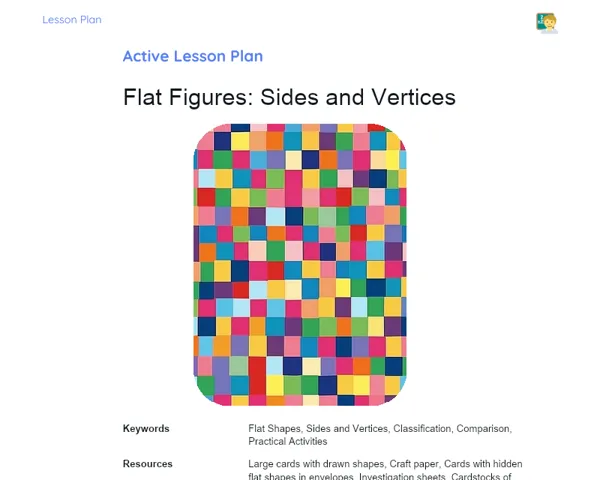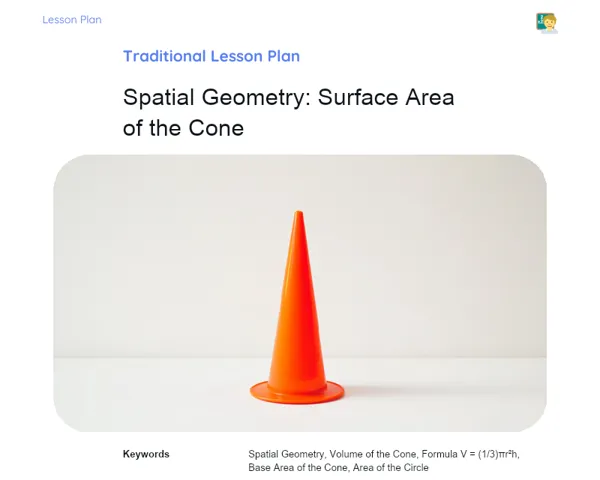Lesson Plan | Lesson Plan Tradisional | Similar Matrix
| Keywords | Similar Matrices, Linear Algebra, Coordinate Transformation, Determinant, Trace, Eigenvalues, Eigenvectors, Diagonalisation, Differential Equations, Quantum Physics, Engineering |
| Resources | Whiteboard, Markers, Projector, Computer, Presentation slides, Printed exercise sheets, Scientific calculators, Paper and pens for note-taking |
Objectives
Duration: 10 - 15 minutes
The aim of this lesson plan section is to ensure that learners grasp the main objectives. By outlining these goals from the start, students will have a better understanding of what’s expected and feel more equipped to engage with the content. This also helps the teacher to structure the lesson in a coherent and focused manner, ensuring that all crucial points are covered.
Objectives Utama:
1. Explain what similar matrices are.
2. Show how to find similar matrices using the formula S=P⁻¹AP.
3. Teach students how to compute a similar matrix for a specific matrix.
Introduction
Duration: 15 - 20 minutes
The goal of this introduction is to create an engaging learning environment right from the start. By offering a clear context and sharing fascinating tidbits about how the topic applies in real life, we spark student interest in the subject and its significance. This sets the stage for a more in-depth and technical discussion that will follow.
Did you know?
Did you know that similar matrices are employed across various scientific and technological fields? In quantum physics, for instance, the Hamiltonian matrix can be diagonalised using similar matrices to uncover energy states. In engineering, we use similar matrices to simplify systems of differential equations, making it easier to analyse and solve complex problems.
Contextualization
To kick off today's lesson, we will delve into a key concept in linear algebra known as similar matrices. This idea is a valuable tool that helps us better comprehend the properties of a matrix and how it can be transformed. Think of having a matrix and wanting to simplify it or look at its characteristics from a different angle. Similar matrices allow us to do just that, offering a means to compare and manipulate matrices that may appear different but share essential properties.
Concepts
Duration: 40 - 50 minutes
This development stage aims to unpack the key concepts of similar matrices, highlighting their properties, methods of calculation, and practical applications. The objective is for students to achieve a comprehensive understanding of the topic, know how to apply the methods discussed, and tackle practical problems. By the end, students should be capable of identifying and calculating similar matrices and appreciating their significance in various mathematical and scientific contexts.
Relevant Topics
1. Definition of Similar Matrix: Explain that two matrices A and B are similar if there exists an invertible matrix P such that B = P⁻¹AP. Stress the importance of this relationship and its implications regarding coordinate transformation.
2. Properties of Similar Matrices: Discuss the main properties shared by similar matrices, such as determinant, trace, and eigenvalues, and how these can simplify complex problems.
3. Step by Step to Find Similar Matrices: Guide students through the process of finding a matrix similar to a given matrix. Provide a detailed, worked example, demonstrating each step in calculating P⁻¹AP, including verifying that P is invertible and multiplying the involved matrices.
4. Applications of Similar Matrices: Explore practical applications, such as diagonalising matrices and simplifying systems of differential equations, using concrete examples to illustrate these concepts.
To Reinforce Learning
1. Given the matrix A = [[2, 1], [1, 2]], find a matrix P such that the matrix B = P⁻¹AP is diagonal.
2. Consider the matrix A = [[1, 2], [3, 4]]. Determine if the matrices B = [[4, 3], [2, 1]] and A are similar. If they are, find the appropriate matrix P.
3. Discuss why two similar matrices have the same eigenvalues but not necessarily the same eigenvectors, providing an example to clarify your explanation.
Feedback
Duration: 20 - 25 minutes
This feedback stage is designed to affirm that students comprehend the explanations and solutions for the discussed questions, fostering active dialogue and interaction with the material. This reinforces their learning and enables clarification of any uncertainties that arose during the lesson. The teacher can assess understanding and adjust future lessons accordingly.
Diskusi Concepts
1. Question 1: Given the matrix A = [[2, 1], [1, 2]], find a matrix P such that the matrix B = P⁻¹AP is diagonal. 2. To tackle this question, first determine the eigenvalues of A by solving the determinant (A - λI) = 0. The eigenvalues are λ = 3 and λ = 1. Next, find the eigenvectors associated with these eigenvalues. For λ = 3, the eigenvector is [1, 1] and for λ = 1, it is [-1, 1]. Thus, P is formed from the eigenvectors as columns: P = [[1, -1], [1, 1]]. Calculating P⁻¹AP gives the diagonal matrix B = [[3, 0], [0, 1]]. 3. Question 2: Consider the matrix A = [[1, 2], [3, 4]]. Check if the matrices B = [[4, 3], [2, 1]] and A are similar. If so, find the corresponding matrix P. 4. To determine if A and B are similar, we seek a matrix P such that B = P⁻¹AP. First, calculate the eigenvalues of both A and B. Both matrices yield eigenvalues λ₁ = 5.372 and λ₂ = -0.372. Next, identify the matrix P from the eigenvectors. This involves solving (A - λI)x = 0 and (B - λI)x = 0 for the eigenvectors. After locating P, confirm similarity by verifying B = P⁻¹AP. 5. Question 3: Explain why two similar matrices have the same eigenvalues but not always the same eigenvectors. 6. Two similar matrices have the same eigenvalues due to the transformative nature of P⁻¹AP, which preserves the original matrix's characteristic values. However, eigenvectors might differ because the change in basis can alter their directions, even as eigenvalues remain constant. For example, with matrix A = [[2, 1], [1, 2]], the eigenvectors in the initial basis are [1, 1] and [-1, 1]. Representing A in a new basis might yield different eigenvectors, though the eigenvalues (3 and 1) stay unchanged.
Engaging Students
1. Encourage students to explain the concept of a similar matrix in their own words and discuss its importance. 2. Ask learners how the property of similar matrices can assist in simplifying the resolution of a linear equations system. 3. Propose a discussion on how diagonalising a matrix aids in understanding its fundamental properties. 4. Challenge students to think about other areas in mathematics or science where similar matrices could be applicable.
Conclusion
Duration: 10 - 15 minutes
This conclusion stage aims to consolidate student learning by summarising the key points discussed and reinforcing the links between theory and practice. This overview ensures that students possess a solid and comprehensive understanding of the material while underscoring the topic's importance and applicability in diverse contexts.
Summary
['Clarification of the concept of similar matrices.', 'Demonstration of how to identify similar matrices using the formula S=P⁻¹AP.', 'Calculation of a similar matrix from a given matrix.', 'Discussion of essential properties of similar matrices, including determinant, trace, and eigenvalues.', 'Detailed problem-solving examples involving similar matrices.', 'Real-world applications of similar matrices in fields such as quantum physics and engineering.']
Connection
The class connected the theory of similar matrices to practical applications via comprehensive examples and methodical problem-solving. This demonstrated how the theoretical concepts relate to real-life situations, effectively aiding in solving complex mathematical problems with greater ease.
Theme Relevance
The notion of similar matrices carries significant relevance across various fields, including physics, engineering, and computer science. For instance, in quantum physics, diagonalising matrices can help uncover energy states within physical systems, while in engineering, streamlining matrices can simplify the solutions to differential equations, making challenging problems more accessible.



